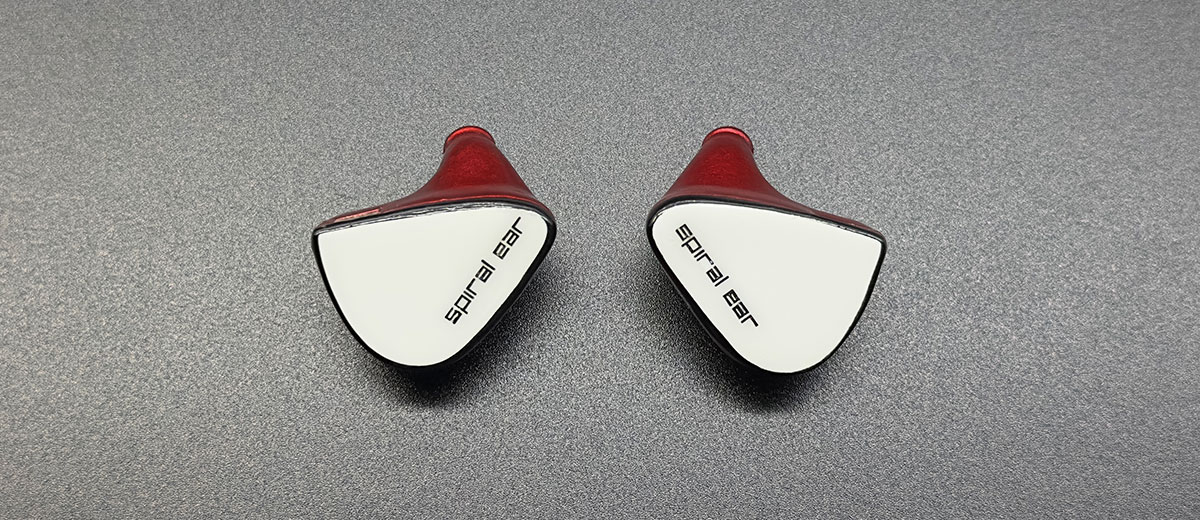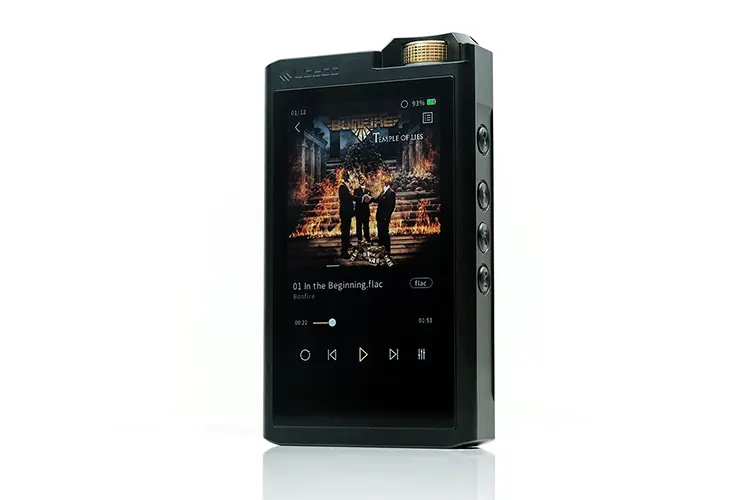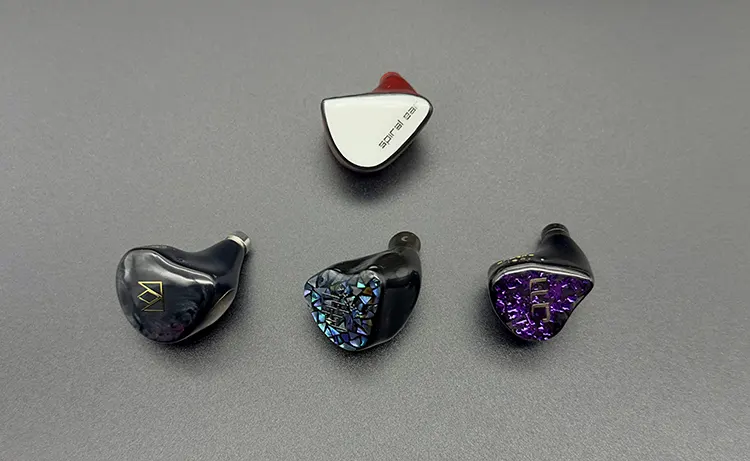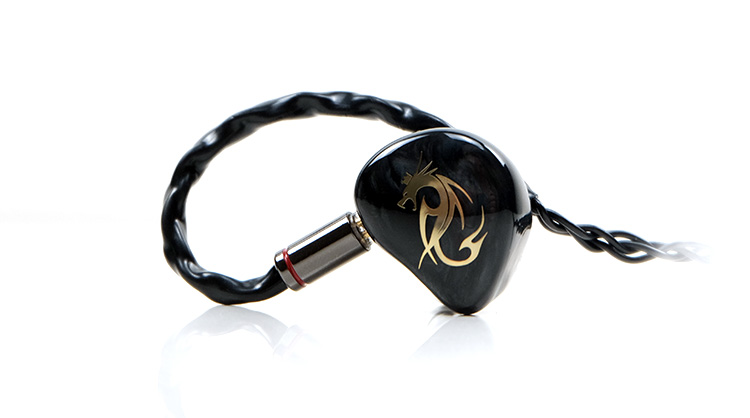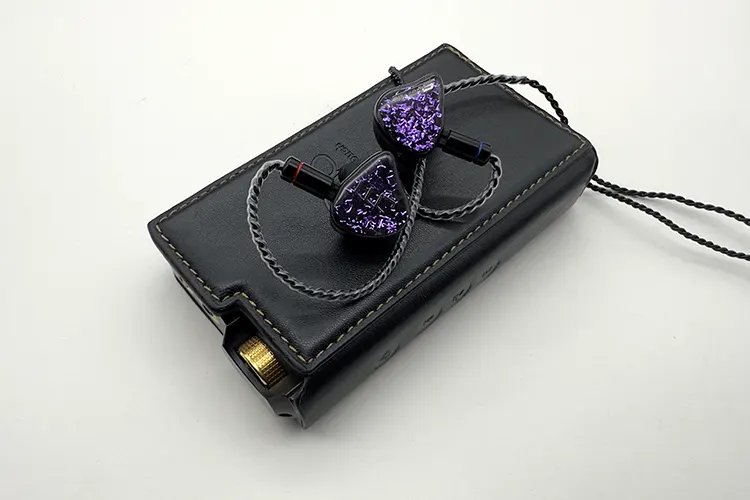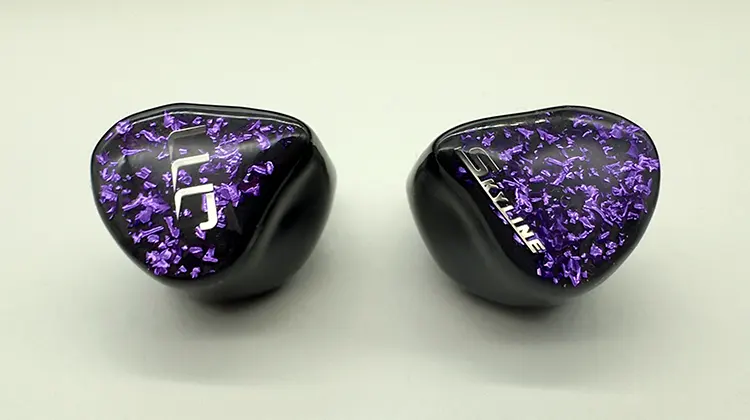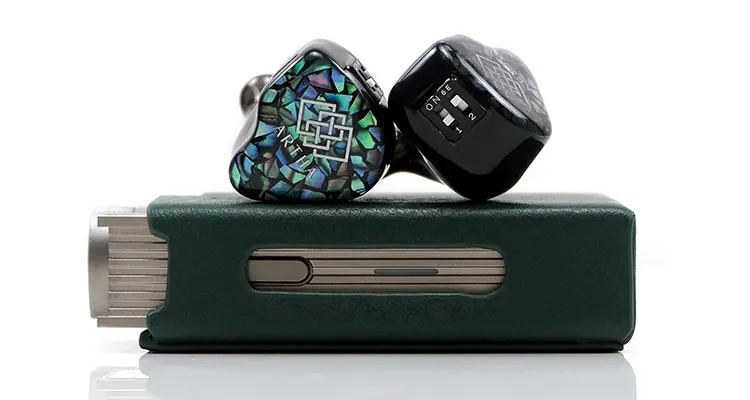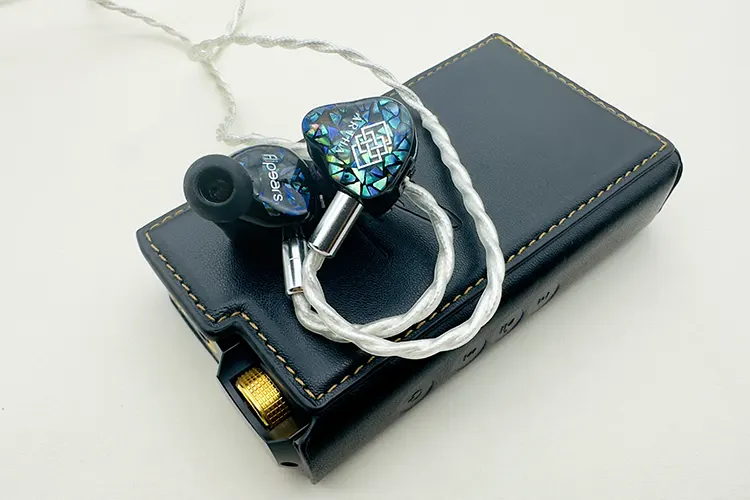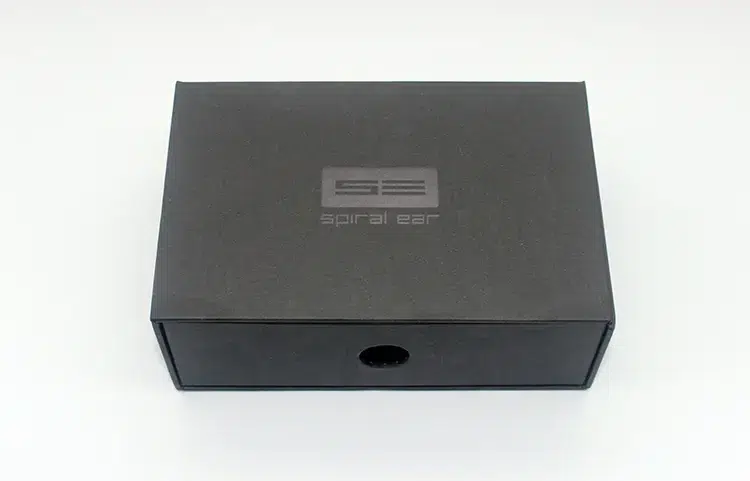Synergy
Efficiency & Sensitivity
The SE5 NEBULA is rated at 23Ω and 101 dB SPL, and it is fairly efficient to drive. It doesn’t require much power to reach its full potential, making it versatile with a wide range of sources.
Whether you’re using a smartphone, dongle, or other basic setups, it still delivers a decent sound without feeling underpowered.
With the LPGT, I find a comfortable listening level at volume 30, and on the SP3000, I typically stay around volume 45. It’s not demanding on power and does not need any scaling either.
Unlike many IEMs, it doesn’t lose its charm on simpler setups. When paired with higher-resolution sources, the sound becomes more refined, with enhanced detail and a richer tone.
Source Pairings
The SE5 NEBULA pairs best with warm-leaning sources. A neutral or bright source can add unwanted sharpness to the sound, resulting in a clinical presentation that some may find cold or lacking in musicality.
On my go-to source, the LPGT, the SE5 NEBULA pairs very well. The DAP adds a nice touch of warmth, enriching the overall tone.
The bass gains weight and texture, aligning more with an audiophile-grade tuning than a purely professional one. The warmth in the midrange adds a nice emotional touch. The soundstage has good depth, though the width remains modest, which feels just right.
With the Questyle CMA18P and its AKM 4493 DAC chipset, the SE5 also performs well, though there is a noticeable static hiss due to the higher power output.
CMA18P has this static hiss issue with many IEMs. While the hiss fades once music plays, it’s something to be aware of. Aside from that, the sound is open, similar to the LPGT.
Bass impact is strong, and the overall sound retains a decent amount of warmth, though slightly less than with the LPGT. Treble extension is good, adding a nice balance to the sound.
The pairing with the SP3000 is where the SE5 NEBULA truly shines. The stage width, which felt limited on other sources, expands beautifully here.
The sound is spacious and more detailed, as if new doors have been unlocked. It leans toward a more neutral presentation than the above two, but with just enough warmth to avoid sounding too analytical.
The bass is more spread out, so while the impact isn’t as punchy as on the LPGT, there’s better layering and separation, making bass lines from various instruments more distinct. The midrange is slightly neutral, and the treble extends beautifully, giving the sound an airy and detailed quality.
Select Comparisons
Noble Audio Kublai Khan
Technical
The Noble Audio Kublai Khan features a hybrid driver setup, including a 10mm dynamic driver and a bone conduction driver for the lows, four Knowles BA drivers covering the low, mid, and high frequencies, and a 10mm piezoelectric super tweeter for the highs and ultra-highs.
While Noble doesn’t provide an exact impedance rating beyond “less than 30Ω,” the Kublai Khan is sensitive enough to pair well with most DAPs or portable sources.
Though it’s easy to drive, it performs with more energy and dynamics when powered by higher-output sources. On both my LPGT and SP3000, it requires a few extra volume clicks. In contrast, the SE5 NEBULA doesn’t need any additional power.
Design
The Kublai Khan is a beautiful IEM with a solid, premium build. It features a 3D-printed resin shell and an eye-catching acrylic acetate faceplate with a stylish dragon logo.
The nozzle is made of stainless steel and comes with a metal wax guard sheet. The shells are slightly larger than those of the SE5 NEBULA, protruding a bit when worn, but thanks to their lightweight design, they fit comfortably without issue.
When it comes to accessories, there’s no real comparison between the two. The Kublai Khan is far ahead, offering a much more premium experience with its high-quality, pro-grade inclusions.
It comes equipped with Noble’s 8-core OCC cable, a 1.2-meter wire in a tightly braided, all-black PVC jacket. Both IEMs use the same 0.78mm 2-pin connector.
Kublai Khan provides two types of foam ear tips and a set of silicone tips. The Nanuk 903 case, which accompanies it, brings to mind a scene straight out of a zombie apocalypse—it’s built like a tank, ready to protect your gear in the harshest conditions.
Performance
I have a special fondness for the Kublai Khan, and I’m comparing it to the SE5 NEBULA because the NEBULA is technically outstanding.
Starting with the bass, both IEMs lean neutral, but the Kublai Khan carries more body and weight, though its mid-bass can lack impact.
The SE5 NEBULA balances bass evenly, delivering tighter, punchier mid-bass. Hardcore bassheads may find both lacking, but the Kublai Khan’s bone conduction driver adds a tactile sensation, making it more immersive. Its sub-bass also offers better depth, texture, and layering.
In the midrange, the SE5 NEBULA truly shines. It delivers incredible resolution and clarity, with forward and richer mids compared to the Kublai Khan’s more relaxed presentation. Vocals on the SE5 are denser, textured, and more nuanced.
Instruments like guitars and violins sound weightier and sweeter, while the Kublai Khan feels softer. The SE5 extends beautifully into the upper mids, where the Kublai Khan can feel too relaxed.
For treble, the SE5 NEBULA has the edge with its crisp, detailed, and biting highs, contrasting the smoother treble of the Kublai Khan. While the Kublai Khan has decent airiness, its details aren’t as sharp.
The SE5 NEBULA excels in upper treble, preserving delicate cymbal decays without blending. Though its treble can lean sharp, it remains non-fatiguing, while the Kublai Khan stays safely smooth.
Technically, the Kublai Khan excels in soundstage width and dimensionality, but the SE5 NEBULA offers better resolution and treble clarity, revealing finer details and nuances.
Ultimately, while both are strong performers, the SE5 NEBULA edges ahead with superior treble, resolution, and midrange richness. I wasn’t expecting this outcome and wish I had a Noble Audio Viking Ragnar to compare—but that’s a totally unfair fight against a $4K flagship.
Jomo Audio 408H Skyline
Jomo Audio is a well-established brand from Singapore and has been at the forefront of IEM design and manufacturing for a decade.
Technical
The Jomo Audio 408H Skyline is a universal hybrid IEM featuring a combination of two custom 9.7mm PET diaphragm dynamic drivers and six high-precision balanced armature drivers.
The two dynamic drivers are dedicated to handling the lows, while the balanced armatures are grouped into three sets for mid, mid-high, and high frequencies.
With an impedance of 8Ω @1 kHz, the Skyline can be driven easily but requires a source with decent power to perform optimally.
Design
The Skyline’s shells are built from acrylic resin, with a black body and a faceplate adorned with sparkling purple flakes. Its shiny aesthetic is more eye-catching than the SE5 NEBULA’s minimalistic, dual-color design.
In terms of size, the Skyline is compact but just slightly smaller than the SE5 NEBULA and both have similar shell weight.
Thanks to its small size, the Skyline offers a comfortable fit, though its larger nozzle doesn’t present any fitting challenges compared to the SE5 NEBULA. It implements a triple-bore nozzle design, whereas the SE5 NEBULA employs a more complex five-bore structure for sound output.
Both IEMs use a 0.78mm 2-pin connector, with the Skyline featuring a 4.4mm balanced cable. However, the cables on both IEMs are thin and flimsy, which is a bit disappointing considering their prices.
Packaging-wise, the Jomo Skyline comes with premium accessories, including a large carry box with removable inner foam cutouts, allowing space for additional storage, and even a DAP. It also comes with a round leather case, adding a touch of premium.
Performance
The Jomo 408H Skyline has a V-shaped tuning with a bright and energetic sound profile. Both the Skyline and SE5 NEBULA emphasize resolution and clean sound, but their approaches differ in various areas.
While the Skyline features dual dynamic drivers, the bass isn’t particularly punchy or impactful. It leans towards a neutral side like the SE5 NEBULA, though the Skyline has more sub-bass rumble and body.
However, the mid-bass punch is where the SE5 NEBULA outshines the Skyline. In terms of texture and layering, the SE5 NEBULA offers superior bass performance with better detail and separation.
The SE5 NEBULA adds more body and weight to the lower mids, offering a touch of warmth and lushness. The Skyline, on the other hand, has a more linear lower midrange, lacking the richness found in the SE5 NEBULA.
Vocals and midrange instruments are denser and more forward on the SE5 NEBULA, where the Skyline comes across leaner in presentation.
The Skyline can occasionally sound sibilant in the upper midrange, depending on the source. The SE5 NEBULA handles the upper midrange more maturely, extending smoothly without harshness.
The SE5 NEBULA excels with more weight in its treble notes, offering a vivid, natural, and lively presentation. While the Skyline’s treble is energetic and airy, it lacks the effortless detail retrieval and shimmer that the SE5 NEBULA delivers, making the latter feel more refined.
The SE5 NEBULA offers a taller stage with more depth, while the Skyline edges ahead slightly in width. The macro-staging of the Skyline feels compressed compared to the spacious and accurate stage of the SE5 NEBULA, which allows instruments to breathe and perform effectively.
The SE5 NEBULA shines in bringing out micro-details more prominently, with the Skyline losing elements in the mix due to its soft notes and quicker note decay.
Flipears Artha
Flipears is an IEM brand from the Philippines. They specialize primarily in building custom IEMs and have some decent offerings in their universal lineup too.
Technical
Artha is an all-BA IEM equipped with 8 custom Sonion BA drivers. Some of the key focuses of the customization are on delivering a cleaner sound and replicating the bass response of dynamic drivers. There are two drivers each for sub-bass, bass, midrange, and high frequencies.
With an impedance of 16Ω and a sensitivity of 118 dB @ 1 mW, the Artha is efficient to drive. Neither IEM requires extra power through my LPGT, but Artha does benefit a bit from more powerful sources or amps, gaining extra character and dynamics with added power.
Both Artha and SE5 NEBULA focus on isolation, with Artha achieving a -26 dB rating. It features a 4-way crossover, compared to the SE5 NEBULA’s 5-way setup. Artha has a triple bore nozzle design, while the SE5 NEBULA uses a 5-bore structure.
Artha also includes two tuning switches on each shell, offering four different tuning flavors. One switch adjusts the bass, while the other affects the upper frequencies. For comparison, I’m using the 0-0 balanced mode, where there is no bass boost and treble is slightly relaxed.
The IEMs utilize a Conoid Resonative Chamber (CRC) nozzle design. This structure, named for its conical or dome-like shape, is engineered to enhance specific sound frequencies, improving overall frequency response and elevating the acoustic experience.
Design
Both the SE5 NEBULA and Artha feature resin shells, but the Artha stands out with its multi-colored faceplate design, while the SE5 NEBULA goes for a more minimalistic, dual-colored look.
Aesthetically, the Artha has a bit more flair compared to the understated appearance of the SE5.
In terms of size and weight, the SE5 NEBULA is slightly smaller than the Artha, but both IEMs offer nice ergonomic design. However, the Artha’s nozzle design can pose a challenge for those with smaller ear canals, potentially affecting the fit.
Both IEMs use 0.78mm 2-pin connectors, but the Artha’s cable is of better quality, offering a sturdier build, even though it’s still not exceptional. In contrast, the SE5 NEBULA comes with a thinner cable. Artha has a recessed 2-pin connection.
When it comes to packaging, Flipears provides a decent array of accessories with the Artha, including three sets of in-house ear tips and a special Eletech Baroque tip.
The Artha also comes with a rectangular leather case, offering a premium feel. Meanwhile, the SE5 NEBULA comes with a practical Pelican Case, and the choice between the two really depends on personal preference.
Performance
Artha’s sound strikes a balanced blend of warmth, technical prowess, and musicality, leaning more toward musicality.
The SE5 NEBULA, by contrast, prioritizes technical precision with a cleaner output and a touch of warmth. The key difference lies in warmth, Artha’s fuller, more forward midrange gives its sound greater weight.
In bass performance, both IEMs differ. At Artha’s 0-0 switch setting, the bass impact feels closer to the SE5 NEBULA. Neither excels in deep sub-bass extension or rumble, but Artha leads in mid-bass with greater authority and impact.
The SE5 NEBULA counters with a quicker, tighter punch and no lingering effects. Artha’s bass mimics dynamic driver physicality, while the SE5’s faster decay sacrifices this.
On the 1-0 setting, Artha’s bass gains impact but bleeds into higher frequencies, making the 0-0 setting better for balance. Still, Artha’s mid-bass can feel overly thick and warm.
In the midrange, Artha offers extra warmth and density, making it more prominent and intimate. By contrast, SE5 NEBULA presents a cleaner, more neutral midrange, excelling in resolution and clarity with accurate, natural note decays.
Artha’s warmer midrange can overshadow instruments on bass-heavy tracks, while its upper mids feel less extended and energetic than SE5’s.
In treble, SE5 NEBULA shines with its airy, extended presentation, offering superior shimmer and clarity in cymbal strikes. Artha’s warmth dulls upper frequencies, giving them a darker tone. The 0-1 setting improves Artha’s treble airiness but doesn’t fully refine it, as warmth persists.
In soundstage, Artha delivers a more intimate, closed-in presentation. The 0-1 setting broadens its stage slightly, adding openness.
SE5 NEBULA provides a more natural, balanced stage with superior resolution, instrument separation, and layering, where instruments feel better spaced than on Artha’s more constrained stage.
My Verdict
The Spiral Ear SE5 NEBULA Universal version has been a delightful surprise for me. I had no idea they even existed, and now I’ve grown quite fond of their tuning.
Despite Spiral Ear’s professional background and focus on custom IEMs, the SE5 NEBULA delivers a premium audiophile-grade sound.
For an IEM with just five balanced armatures, the sound quality defies the assumption that more drivers mean better performance. It’s all about the tuning and getting the finer details right, and Spiral Ear nailed it here.
For those who can’t stretch their budget to flagship models, the SE5 NEBULA offers a satisfying taste of high-end performance at a more accessible price.
Spiral Ear SE5 NEBULA Universal Specifications
- Driver Configurations: 5 balanced armatures
- Frequency Response: 15Hz – 25kHz
- Impedance: 23Ω
- Sensitivity: 101 dB @ 1kHz
- Crossover: True 5-way Passive Crossover
- Cable: Advanced Onyx Cable

